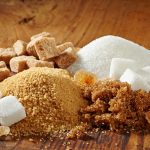Salt, Gels, Powders and Bars
Yikes. Doesn’t really sound like much of a menu offering, does it? More along the lines of what you’d find in the bath section of a beauty supply shop! I fell victim to it, too. For years. Even as an endurance athlete who was completely Paleo with the exception of using manufactured sugars for long distance events like Ironman, I still fell prey to the marketing of the ‘sports nutrition’ companies who led me to believe I needed salt supplements, maltodextrin, and to hydrate, hydrate, hydrate as much as possible in advance to avoid dehydration, but also to keep on top of taking electrolytes to avoid the risk of hyponaturemia, a potentially lethal condition in which the amount of sodium in the blood is lower than normal. Far too many athletes succumb to the media’s advice and during the course of a training day or race, put everything but the kitchen sink into their bodies, then wonder why they’ve ended up with horrible GI issues and a race that’s been completely sabotaged. This is certainly not to say that if you’re in the same boat- an endurance athlete taking gels and salts, even if you’ve already stopped the bars (which, aside from not being Paleo, simply don’t make sense during high intensity efforts. When the body is in fight or flight, as it is during a race, so much blood is diverted away from the gut toward the skeletal muscle instead, we simply cannot digest a solid object.) and the whey and the soy, that you should go out tomorrow and do a fasted session with nothing but water. It takes time to adapt. But it will happen. Your body will respond and can become fat-adapted, you’ll become more efficient at utilizing fat as a substrate over carbohydrate and if you follow a True Paleo regime, which is high in Potassium and low in Sodium, you’ll help your body that much more. Take it slow, give it time and you can change your regime to one much more in keeping with what the truest sense of the Paleo approach would be. For me, taking the early part of 2014 off from racing, increasing my fasted training, changing my paleo macronutrient ratio to be such that I’m consuming well over 50% of my calories from fat and not using gels has proven an invaluable lesson. I cannot wait to see what 2015 holds in terms of performance! Read more for yourself: both the revised Paleo Diet for Athletes, by Dr. Loren Cordain and Joe Friel, as well as Waterlogged, by Tim Noakes are invaluable resources for any athlete interested in learning the real deal. Both illustrate how much we get from simply eating real, unadulterated food. And moving.





